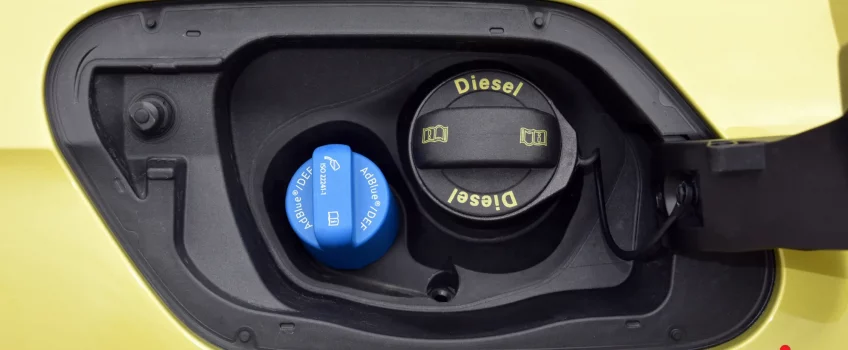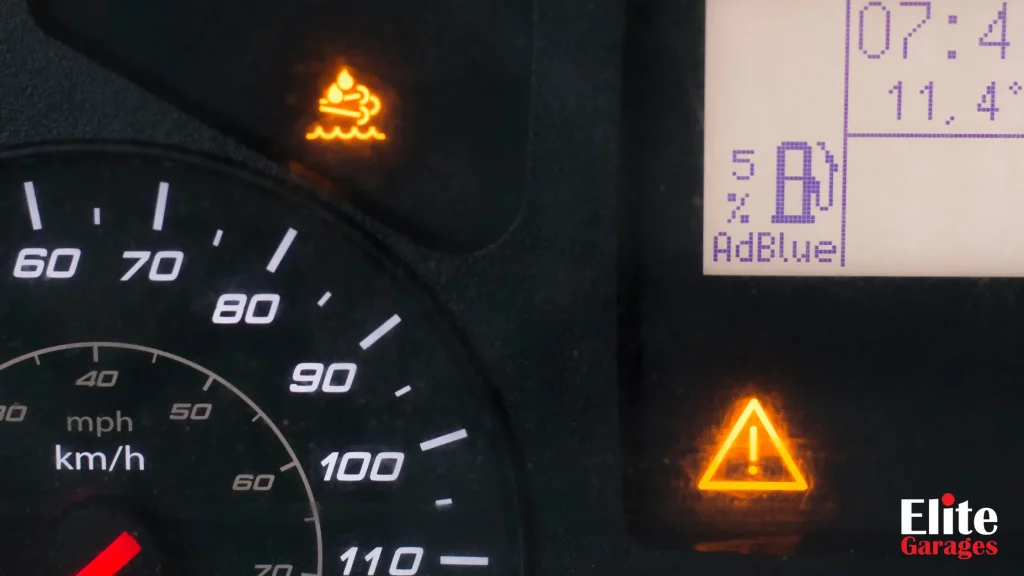
What Is AdBlue And Why Do You Need It?
AdBlue is a type of liquid used in several new diesel vehicles. If your vehicle has AdBlue, you’ll almost certainly have to refill it between services. In this article, discover what it does, how it works, and why monitoring dashboard alerts is so important – especially if you drive frequently.
What Is AdBlue?
The most popular Diesel Exhaust Fluid (DEF) is AdBlue®. It’s a registered trade name of the German automobile manufacturers association, so not every vehicle has it. It is a colourless liquid kept in a separate tank, either next to your fuel filler, in the boot or under the bonnet. Remember, it is an exhaust fluid, not a fuel additive.
What Does AdBlue Consist Of?
Contrary to popular belief, AdBlue is not made of a pig’s urine and it’s also not blue. This colourless, non-toxic man-made solution consists of urea and de-ionised water which is sterile enough to use as a commercial product. Automotive urea refers to a combination of ammonia and carbon dioxide.
What Is It Used For?
AdBlue is used to reduce diesel exhaust emissions and it became compulsory for all diesel vehicles to use some form of DEF. This occurred in September 2015 when the EU introduced Euro 6 which is the strictest emissions standard to date. It works in tandem with the Diesel Particulate Filter (DPF) to lower the amount of Carbon Dioxide (CO2) and Nitrous Oxide (NOx) emitted into the environment.
How Does AdBlue Work?
When your tank is full, it carefully injects AdBlue into the exhaust gases generated by your engine. The NOx emissions are broken down by ammonia in the urea through a series of chemical reactions. As a consequence, rather than producing any hazardous chemicals, your exhaust emits Nitrogen and water vapour into the air. The result is a reduction of up 90% NOx emissions!
What Happens If I Run Out Of AdBlue?
If your vehicle runs dry of AdBlue, it enters the ‘limp home’ state and since your car sees this DEF as fuel, it won’t run without it. By default, this mode will limit your car’s power and performance, allowing you to drive to your nearest garage or home, whichever is closest. Remember, once you turn the engine off, you won’t be able to restart your car until you’ve topped up your AdBlue® tank.
What Does The Warning Light Mean?
When AdBlue level is low, you may see a warning light resembling a bottle with pouring liquid or something similar. This warning light indicates that you have about 3 litres left, enough for approximately 1,500 miles so it’s best to fill up as soon as possible.
Can I Top It Up Myself?
Every TotalEnergies service station sells standard 5L and 10L cans of AdBlue so you can top it up yourself. They are also adding special AdBlue pumps for light vehicles which brings us to the next top tip. You should never top up a light vehicle with a pump intended for heavy goods vehicles since the high flow rate is not suitable.
How Do You Refill AdBlue?
While your mechanic should refill your AdBlue tank during a vehicle service, if you need to top it up yourself, follow this process:
- Locate the AdBlue tank which is either under the bonnet, in the boot or next to the diesel filler cap. Check your owner’s manual if you are unsure
- If you have one at hand, attach an anti-spill nozzle to the AdBlue container to top up. If you don’t, remove the AdBlue tank cap and use a funnel
- Now, slowly refill the tank until it is full
- In some vehicles, you may need to reset the dashboard warning light once it’s been topped up. You should be able to find the information in your owner’s manual or ask your mechanic if this applies to your vehicle
- Do not start your car until the onboard computer has confirmed the refill which could take a couple of minutes
How Long Does it Last?
The average distance that a full tank of AdBlue will last is 6,000 to 7,000 miles. Typically, 1 litre lasts for around 600 miles but your driving style may impact this. Since travelling between 6,000 and 7,000 miles will empty your tank, we recommend topping up every 5,000 miles just in case. The last thing you need is to run out and get stuck in the middle of nowhere.
Does My Car Need AdBlue?
Since AdBlue is a registered trademark, not every manufacturer is authorised to use it. If you have a diesel version of the following models, chances are you need to use AdBlue. The information should also be available in your vehicle owner’s manual.
Audi
- A4 Avant
- A4 Saloon
- A5 Sportback
- A6 Avant
- A7 Sportback
- A8
- Q3, Q5 and Q7
BMW
- 5 Series Saloon
- 5 Series Touring
- 7 Series Saloon
- X5 and X6
Citroen
- Berlingo Multispace
- C3
- C4 Cactus
Jaguar
- XE
- XF
- XJ
Land Rover
- Discovery
- Discovery Sport
- Evoque
- Range Rover
- Range Rover Sport
Peugeot
- 208 and 2008
- 308 and 30008
- 508 and 508SW
- 5008
- Partner Tepee
- Traveller
Volkswagen
- Caddy
- California
- Caravelle
- Passat and Passat Alltrack
- Tiguan
- Toureg
- Transporter
Mercedes-Benz
- C-Class Saloon
- CLS
- E-Class Saloon
- G-Class
- GLC and GLE
- Sprinter
- S-Class Saloon
- Vito
If your car doesn’t fall into one of the categories above, it may use a different DEF or emissions-reducing technology. Consult your vehicle handbook for further details. Petrol cars do not need AdBlue as it’s only fitted to certain diesel models.
Our last top tips are especially important as making these mistakes can be very costly. Never put AdBlue into your fuel tank and never add diesel to the AdBlue tank.
If you are unsure about anything, ask a staff member at a TotalEnergies service station or visit your nearest Elite Garages and we’d be happy to help. For more motoring news and vehicle maintenance tips, including AdBlue, follow our blog.
About Us
Opening Times
Saturday : 8:30–4:00
Sunday : closed
More Information
Contact UsCustomer Information Pack
Check MOT Due Date
Free MOT reminder
Careers
Legal Information
Recent Posts
- The Most Common Car Questions UK Drivers Ask, And What They Usually Mean
- Why Short Winter Journeys Cause So Many Common Car Problems
- Why Car Problems Happen More Often in January (And What Drivers Miss)
- Why the Right Car Service Garage Matters: Advice Drivers Trusted Most in 2025
- Christmas Guide to Winter Car Checks: From All of Us at Elite Garages



